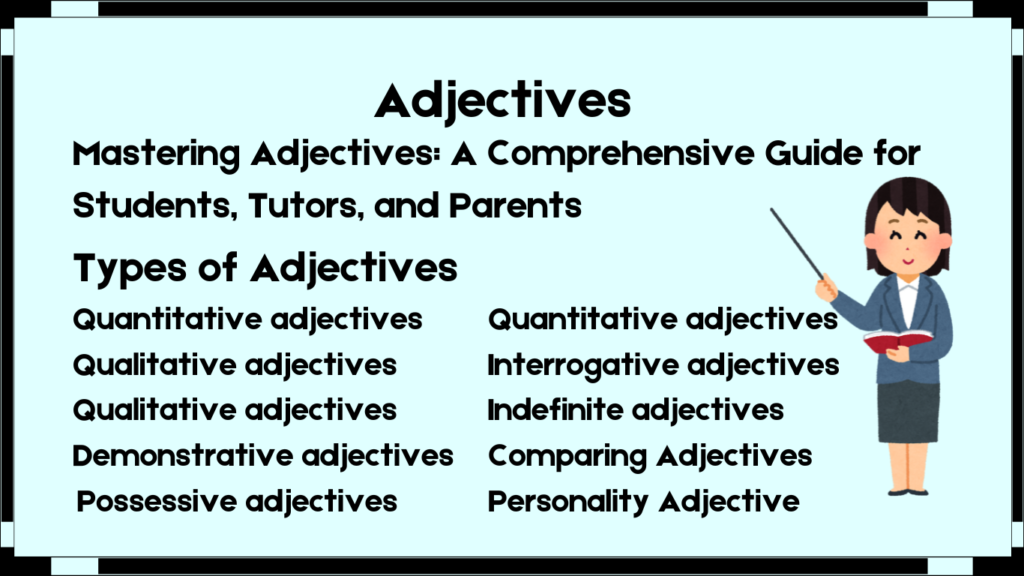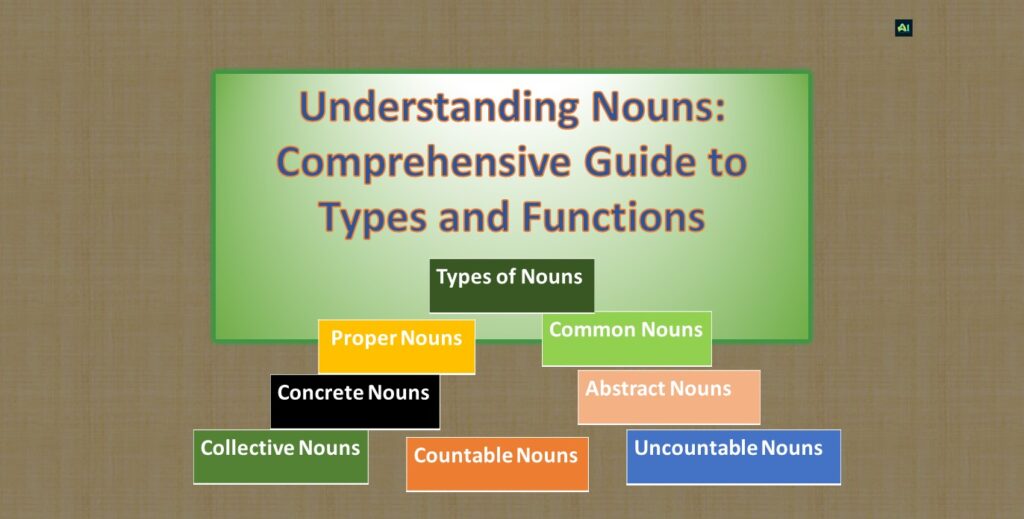Mastering Sentence Structures for Effective Communication
Understanding sentences and their types is key to effectively expressing our thoughts. Effective communication heavily depends on how you structure your sentences. Understanding the different types of sentences and their proper usage can significantly improve your writing skills. This blog post will cover everything you need to know about sentences, including their structure, types, and how to use them effectively
What is a Sentence?
Definition of a Sentence
A group of words which expresses a complete thought is called a sentence. It contains a subject and a predicate and can stand alone as a complete idea. Sentences are fundamental units of language that convey information, ask questions, express emotions, and provide instructions.
Components of a Sentence
– Subject: The subject is the name of the person, place, thing, or idea we speak about..
– Predicate: The predicate tells the action of the subject, or tells what the subject is.
To illustrate, in the sentence “The bird flies,” “The bird” is the subject, and “flies” is the predicate.
Types of Sentences
Sentence types extend beyond structural classification to include classification based on purpose. Understanding these types will help you create more varied and engaging writing.
Types of Sentences Based on Structure
1. Simple Sentences
A simple sentence is a sentence which expresses one complete idea. It is made up of a single subject and a single verb. It consists of one independent clause.
Examples:
– She reads every day.
– The sun rises in the east.
– He kicked the ball.
– Running is an exercise.
– She baked a beautiful cake.
Sometimes it might be hard to identify a simple sentence. Here are examples of simple sentences that might be confused for compound or complex sentences:
Examples:
-Seeing its mother, the baby was happy.
– Feeling tired, I retired to bed.
– Seeing her baby, she was overjoyed.
Tips to Identify a Simple Sentence:
– Ask yourself how many independent sentences or clauses are in the sentence.
– Single out the independent clause (the part of the sentence that can stand alone). For example, in the sentence “Seeing its mother, the baby was happy,” “Seeing its mother” does not express a complete thought. The independent clause in that sentence is “the baby was happy.” Therefore, the sentence “Seeing its mother, the baby was happy” is a simple sentence. “Feeling tired, I retired to bed.” The independent clause is “I retired to bed.” “Feeling tired” is a participial phrase that adds detail but doesn’t form another independent clause. “Seeing her baby, she was overjoyed. “The independent clause is “she was overjoyed. “Seeing her baby” is also a participial phrase providing additional information.
2. Compound Sentences
Permit me to call it double or multiple independent clause. An independent clause plus and independent clause (two or more independent clauses joined by a coordinating conjunction (for, and, nor, but, or, yet, so or a semicolon.) make a compound sentence.
Examples:
– She loves romantic novels, and she reads them everyday.
– He is the poorest in their family, yet he is so proud.
-My father was not considered rich, but we were not poor
– He didn’t know how to feed the baby, so he called his wife.
Note: Compound sentences help in showing relationships between equally important ideas, adding complexity to your writing.
Tips to Identify a Compound Sentence:
– Do you see one or more coordinating conjunctions or a semi-colon joining the sentences? If yes, you have a compound sentence.
– Separate the sentences. Can each of the sentences stand on its own? For example, in the compound sentence “She loves romantic novels, and she reads them everyday,” there’s a coordinating conjunction “and.” “She loves romantic novels” can stand alone. “she reads them everyday” can stand alone.
3. Complex Sentences
A complex sentence is made up of a single independent clause and one or more dependent (subordinate) clauses.
Examples:
– Although she was tired, she fed her baby.
– I don’t want to know how he feels.
– What did you do when you heard the new.
– While it was raining, I slept.
– Tammy wan not happy because dad didn’t buy her a doll.
Note: Complex sentences provide depth by adding details and nuances, making your writing more sophisticated.
Tips to Identify a Complex Sentence:
– Look out for a subordinating conjunction.
– Look out for subordinate or dependent clauses.
The subordinate clause cannot stand alone. For example, in the sentence “Although she was tired, she read the book,” “Although she was tired” cannot stand alone. It depends on the main clause “she fed her baby.”
4. Compound-Complex Sentences
A compound-complex sentence contains at least two independent clauses and one or more dependent clauses.
Examples:
– Although she was tired, she fed her baby, and she put him to sleep.
– He went home happy after he participated in the dance challenge and won.
– I tried to study, but I couldn’t because I was extremely tired.”
– I looked for the book and found it under the desk where Tim kept it while he was playing.
Note: Compound-complex sentences are useful for expressing detailed and interconnected ideas, enhancing the richness of your writing.
Tips to Identify a Compound-Complex Sentence:
– There must be at least two independent clauses and one or more subordinate clauses. In the sentence “I looked for the book and found it under the desk where Tim kept it while he was playing,” “I looked for the book and found it” are two independent clauses. “Where Tim kept it while he was playing” are dependent clauses.
Types of Sentences Based on Purpose
1. Declarative Sentences
Declarative sentences make a statement or express an opinion. They end with a period (full stop).
Examples:
- He enjoys reading.
- She laughs like a clown.
- She wakes up at 9 a.m.
- We cannot compromise our integrity.”
Note: Declarative sentences are the most common type, used for providing information and stating facts.
2. Interrogative Sentences
Interrogative sentences ask a question. They end with a question mark.
Examples:
– Do you like reading?
– Can you spare a minute of your time?
– Has the match ended?”
– Have you apologized to him?
Note: Interrogative sentences are essential for seeking information and engaging the reader.
3. Imperative Sentences
Imperative sentences are sentences that give commands, make requests, or offer invitations. They can end with a period (full stop) or an exclamation mark.
Give commands
Examples:
– Go out!
– Come here.
– Wash the dishes.
– Watch out!
– Do not go out.
Make Requests:
– Please post the letter.
– Please see me tomorrow.
Offer Invitations:
– Kindly join us tomorrow.
– You’re invited!
– Let us go to the circus.
Note: Imperative sentences are crucial for directing actions and making requests.
4. Exclamatory Sentences
Exclamatory sentences express strong emotions or excitement. They end with an exclamation mark.
Examples:
– I love this book!
– What a handsome boy you have!
– I feel good!
Note: Exclamatory sentences add emotion and emphasis, making your writing more expressive and dynamic.
How to Use Different Types of Sentences Effectively
Varying Sentence Structure
Using a mix of simple, compound, complex, and compound-complex sentences can enhance the flow and readability of your writing. This variety keeps your reader engaged and helps to emphasize different points.
Examples:
– Simple: She loves reading.”
– Compound: She loves reading, and she collects books.
– Complex: Because she loves reading, she collects books.
– Compound-Complex: “Because she wants to keep her job, she goes to her office early, and works some extra hours
Matching Sentence Type to Purpose
Choose the type of sentence that best matches your purpose. For instance, use declarative sentences for providing information, interrogative sentences for asking questions, imperative sentences for giving commands, and exclamatory sentences for expressing strong emotions.
Examples:
– Declarative: Reading is beneficial.
– Interrogative: Have you read this book?
– Imperative: Read this book.
– Exclamatory: This book is amazing!
Using Punctuation Correctly
Punctuation is crucial for conveying the correct meaning and tone of your sentences. Ensure you use periods, question marks, exclamation marks, commas, and semicolons appropriately to enhance clarity and readability.
Examples:
– Correct: She loves swimming; it’s her favorite hobby.
– Incorrect: She loves swimming, it’s her favorite hobby.
Understanding sentences and their types, and effectively using different types of sentences are fundamental skills for any writer. By mastering sentence structures and their purposes, you can create engaging, varied, and impactful writing. Practice combining different types of sentences to improve the flow and richness of your content. With these tools, you’ll be well on your way to becoming a more effective and versatile writer.
Happy learning!



